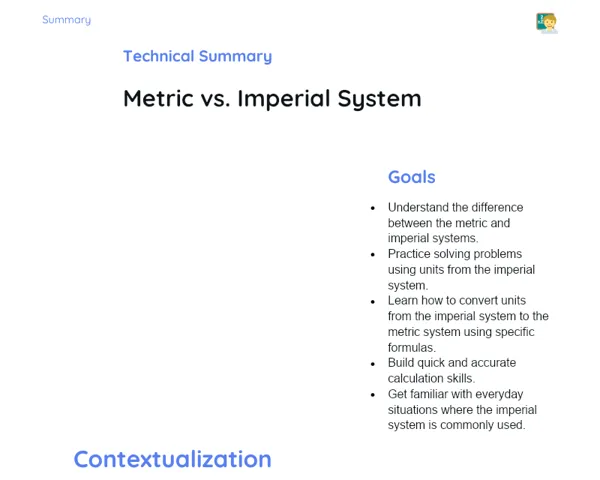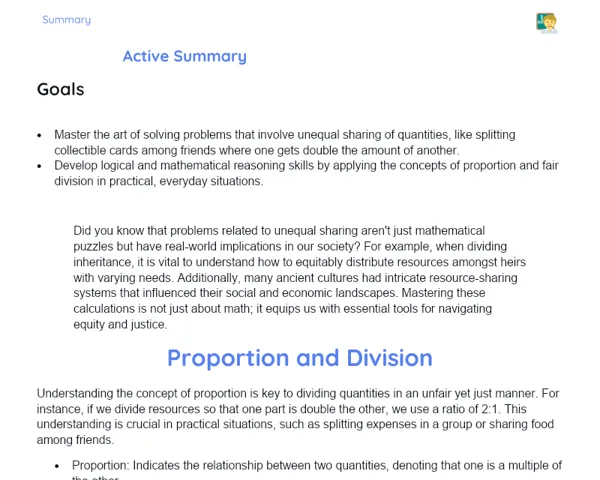Objectives
1. 🔍 Understand and apply the concept that the sum of the internal angles of a quadrilateral is always 360º.
2. 🧠 Develop skills to calculate and identify unknown angles in quadrilaterals, building on prior knowledge of internal angles.
3. 🤝 Foster teamwork and logical reasoning through the practical resolution of problems involving angles in quadrilaterals.
Contextualization
Did you know that the ability to calculate angles in quadrilaterals is important not only in mathematics but also in various fields like architecture and design? Architects, for instance, utilize these concepts to ensure that structures are stable and secure. Understanding how angles sum to 360º enables them to design buildings and bridges that can withstand natural forces. So, what you're learning today has amazing real-world applications! 🌍✨
Important Topics
Sum of Internal Angles
The sum of the internal angles of any quadrilateral is always 360º. This principle is essential for solving problems that involve determining unknown angles in quadrilaterals. For instance, if we know three out of the four internal angles of a quadrilateral, we can easily find the fourth angle by adding the three known angles and subtracting that sum from 360º.
-
In a quadrilateral, the total of the internal angles equals 360º.
-
If we know three internal angles, we can calculate the fourth by subtracting the total of the known angles from 360º.
-
This principle not only applies in mathematics but also in real-life situations like design and architecture.
Properties of Quadrilaterals
Quadrilaterals are polygons with four sides. They can have sides and angles of varying sizes, but the sum of their internal angles is always 360º. Additionally, quadrilaterals can be categorized into several types, such as rectangles, trapeziums, parallelograms, and squares, each having distinct properties that aid the study and practical use of geometry.
-
Quadrilaterals are polygons with 4 sides.
-
The total of the internal angles is always 360º, no matter the type of quadrilateral.
-
Different types of quadrilaterals possess specific characteristics that differentiate them, such as parallel sides or right angles.
Practical Applications
Understanding the internal angles of quadrilaterals is vital for numerous practical applications. For example, in construction, architects and engineers use these concepts to ensure that structures are safe and durable. Likewise, designers and artists use geometric principles to create visually balanced and aesthetically pleasing designs.
-
In architecture, accurate angle calculations are crucial for project stability.
-
In design, grasping angle concepts helps create visually attractive and balanced objects.
-
These applications underscore the practical significance of geometry and encourage the study of angles in quadrilaterals.
Key Terms
-
Quadrilateral: A polygon with four sides and angles.
-
Internal Angles: Angles formed by the intersection of two sides of a polygon.
-
Sum of Internal Angles: The principle that the sum of all internal angles of a polygon is a multiple of 180º, specifically 360º for quadrilaterals.
For Reflection
-
How can understanding the sum of internal angles in quadrilaterals influence your life outside the classroom?
-
Can you think of everyday situations where the concept of angle sum in quadrilaterals might be useful?
-
Why is it important for professionals such as architects and designers to have a strong grasp of these geometric concepts?
Important Conclusions
-
We revisited the interesting property that the sum of the internal angles of any quadrilateral is always 360º, an essential concept in mathematics and many real-world applications like architecture and design.
-
We discussed how this knowledge can be utilized to calculate unknown angles, which is important for addressing everyday problems and in various professions.
-
We explored the significance of understanding the properties of quadrilaterals, which helps us categorize and better understand the geometric shapes in our environment.
To Exercise Knowledge
- Create an angle diary: For a week, note down and sketch examples of quadrilaterals you encounter in your surroundings, like windows and doors, and calculate the sum of their internal angles. 2. Designer Challenge: Try redesigning a common item (like a postcard or a notebook) so that one of its sides forms an angle different from 90º while ensuring the total sum remains 360º. 3. Board Game: Craft a board game where players’ movements hinge on their ability to quickly calculate the sum of angles of various quadrilaterals.
Challenge
🌟 Geometric Detective Challenge 🌟: Create a mystery for your friends or family, where they must guess the object based solely on the measures of its angles. For example, 'This object has four sides. Two angles measure 90º and 120º, while the third measures 80º. What could it be?' Use your imagination to make the challenge both fun and educational!
Study Tips
-
Practice drawing quadrilaterals and labeling their angles to visualize the concepts better and test your understanding.
-
Use geometry apps or drawing software to explore and manipulate different types of quadrilaterals, observing how changes in angles affect their characteristics.
-
Form a study group with friends to discuss and resolve problems related to angles in quadrilaterals, leveraging diverse ideas and approaches to enhance your learning.



